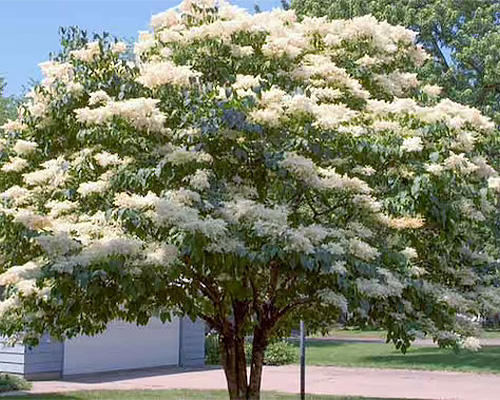Japanese Tree Lilac
Syringa reticulata
Overview
The Japanese Tree Lilac, also referred to as 'ivory silk' is a smaller tree that features beautiful clusters of small white flowers and can stand up to 30 feet tall. It's dark green leaves appear in early spring, followed by it's flowers in the early summer, this foliage spans about 15-25 feet. In the fall, the Japanese Tree Lilac produces small fruits. This tree presents smooth gray bark contrasted by rough, cork-like spots.
Cultivation
The Japanese Tree Lilac is very adaptable and can handle a variety of environments. It can tolerate shade, full sun, alkaline soil, acidic soil, drought, and street conditions; but, this tree does not do well in poorly drained areas.
Biodiversity Sustained
Due to its flowery foliage, the Japanese Tree Lilac attracts butterflies, hummingbirds, and pollinators. Some birds may take shelter in this tree, but many lilac trees repel animals like squirrels.
On Xavier's Campus, over the Next 20 Years, this Tree will:
Stormwater Runoff Intercepted: 2,672 gallons
CO2 Reduction: 2,747 lbs
Environmental Benefits (in US dollars) Over the Next Decade: $150
